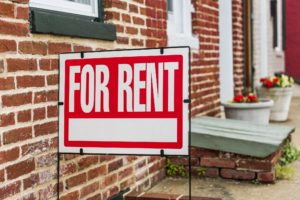 U.S. single-family rents increased 2.9% year over year in January 2020, down a bit from the gain of 3.2% in January 2019, according to the CoreLogic Single-Family Rent Index (SFRI). The index measures rent changes among single-family rental homes, including condominiums, using a repeat-rent analysis to measure the same rental properties over time. Increases in rents averaged 3% over the past year, which is more than double the rate of inflation over that same time period.
U.S. single-family rents increased 2.9% year over year in January 2020, down a bit from the gain of 3.2% in January 2019, according to the CoreLogic Single-Family Rent Index (SFRI). The index measures rent changes among single-family rental homes, including condominiums, using a repeat-rent analysis to measure the same rental properties over time. Increases in rents averaged 3% over the past year, which is more than double the rate of inflation over that same time period.
By city, Phoenix had the highest year-over-year rent growth this January as it has since late 2018, with an increase of 6.4%, followed by Tucson (+5.2%) and Las Vegas (+4.9%). Honolulu had the lowest rent growth in January, increasing by 0.6% from the prior year. Orlando had the largest deceleration in rent growth in January, showing annual rent growth of 2.4 percentage points lower than in January 2019. Boston had the largest acceleration in rent growth in January, with rents increasing 2.2 percentage points faster than in January 2019.
The index’s overall growth in January 2020 was propped up by low-end rentals, defined as properties with rents 75% or less of a region’s median rent. Rents on lower-priced rental homes increased 3.5% year over year and rents for higher-priced homes, defined as properties with rents more than 125% of the regional median rent, increased 2.6% year over year. Rents for lower-priced homes have been growing faster than for higher-priced homes since May 2014, though the difference in these two growth rates has narrowed over time.
According to ATTOM Data Solutions, rental investment yield is down slightly. The annual gross rental yield (annual rent income divided by the average purchase price of single-family homes) is 8.4% for 2020, which is down slightly from the 8.6% average of 2019.
“The business of buying single-family homes for rent has lost a little steam this year across the United States as rents aren’t rising quite as fast as prices for investment rental properties in a majority of the country,” said Todd Teta, Chief Product Officer at ATTOM Data Solutions. “But from the national perspective, things are generally holding steady for landlords in the single-family home rental market. Also, profit trends are moving in favor of investors in higher-rent counties and against those in lower-rent regions.”

 theMReport.com Your trusted source for mortgage banking news
theMReport.com Your trusted source for mortgage banking news









